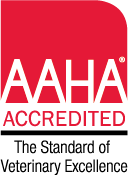Laboratory Services
Ross Hospital for Animal’s on-site laboratory provides our doctors the capability to diagnose health problems and see how well your pet’s organs and body are functioning. The functionality of an on-site laboratory allows for routine lab work to give you peace of mind that your pet is healthy to either continue certain medications or to undergo anesthesia. We also provide a wide variety of tests, which include intestinal parasite screenings, skin and ear tests. In the cases that we need lab work beyond our machines, we have access to an outside lab that can send results back to us.
Radiology
Radiology – A digital X-ray boasts quite a few more benefits than its film predecessor. It emits significantly less radiation, is faster to produce, creates a crystal-clear image, and can be shared easily as a digital file moments after it’s been taken. We offer both full-body and dental digital X-rays. X-rays are useful for a number of situations, particularly if we suspect:
- Broken or fractured bones
- Bladder or kidney stones
- An ingested foreign object
- Organ disease
- GDV (gastro-dilation volvulus or bloat)
- Tumors
Endoscopy
This minimally invasive procedure allows a veterinarian to see inside a pet’s body and, when necessary, take biopsies (tissue samples) without having to perform surgery. Endoscopy is commonly used to examine the inside of the ears, nose, esophagus, colon, bladder, stomach, and other internal organs. Endoscopy can also be used to assist with minimally invasive surgeries and is particularly valuable in retrieving swallowed items.
To perform this procedure, the veterinarian inserts the endoscope (a long tube with a camera at one end) into the area to be examined. Incisions are sometimes required; however, the incisions used for endoscopic procedures are considerably smaller than those used in traditional surgery. This means a much less painful and quicker recovery for your pet.
Endoscopy does require that your pet be placed under anesthesia. As with all such procedures, we follow strict protocols and continually monitor your pet’s vital signs to help ensure his or her safety. Please see the descriptions under Anesthesia and Patient Monitoring for more information on what we do to keep your pet safe.
If you have any questions about our endoscopy service or what to expect during your pet’s procedure, please don’t hesitate to ask.
Tonometry
It is crucial for your pet’s vision that we detect and treat glaucoma and other problems with intraocular pressure (pressure within the eye) as quickly as possible. We can test your dog or cat’s eyes for excess pressure. The test, performed with a device called a tonometer, is not painful and does not require sedation.
If not treated immediately (within hours to days), glaucoma can cause permanent vision loss or even blindness. Pets that have suffered eye injuries should have this test performed. In addition, we recommend that breeds that are prone to developing glaucoma come in for regular measurements so we can monitor eye pressure and begin treatment before any problem becomes irreversible. Please call us to discuss whether your pet may be at higher risk for glaucoma.
Call us right away if you notice any of the following problems in either or both of your pet’s eyes: dilated (enlarged) pupils, clouding of the cornea (the normally clear outer layer of the eye), red or bloodshot eyes, one eye protruding or appearing larger than the other, squinting, or tearing. Because glaucoma is painful, your pet may react by rubbing or pawing at the eyes or rubbing his or her head against the floor or furniture more than normal.
Ultrasound
Unlike x-rays which involve some small degree of radiation, ultrasound waves are considered to be entirely safe. An ultrasound examination is an imaging technique in which deep structures of the body can be visualized by recording echoes of ultrasonic waves directed into the tissues.
The basic abdominal ultrasound examines the liver, spleen, stomach, kidneys, and urinary bladder, although most of the time, we are also evaluating the gall bladder, intestines, lymph nodes, and prostate. Finding tumors and/or fluid in the abdomen and thorax is also an important part of the ultrasound exam.
The use of ultrasound in small animal veterinary medicine has grown rapidly over the years. This non-invasive way to make an early diagnosis, allowing for better health management.


